Brumadinho, six months after a crime with no remedy

A honk blares through the city of a strangled scream. The noise of the Vale train that runs through Brumadinho is a sign that ore never stops, running on the tracks toward foreign lands. Unlike that entire area of southeastern Brazil, the train didn’t mourn in the past six months. But what the small town sees, feels, and breathes is a testament to Andreza’s grief for her son. “Caring for life is not something the mining industry does. Where there is mining, that’s the only thing that survives.”
On January 25th, 2019, about 30 minutes after noon, a tailings dam collapsed in the Mina do Feijão district, in the town of Brumadinho, Minas Gerais state, Brazil. The 40-year-old structure was built upstream -- the least safe, cheapest design -- and was run by mining giant Vale since 2003. The death toll reached 248, but 22 bodies are still under the 12 million cubic meters – roughly 3.2 billion fluid gallons – of toxic byproducts of mining operations.
Before the dam burst, 613 employees and 28 outsourced workers took turns in three shifts operating the mine 24 hours a day. The toxic mud buried around 300 hectares -- or 740 acres -- of land in the Mina do Feijão valley. This is the first installment of a special series by Brasil de Fato about the six-month anniversary of the Vale dam disaster in Brumadinho. Upcoming stories will report on the health issues people impacted by the toxic mud have been experiencing, the damages inflicted to traditional riverside dwellers down the river, and the problems mining operations are posing a nearby community with.
As 180 days have passed since the dam collapsed, the 944,000 people who have felt some or a lot of the catastrophic impacts of the disaster are still trying to get their lives back on track. They live in communities in 18 cities by the banks of the Paraopeba River, which was hit by the toxic mud that flowed 305 kilometers -- nearly 200 miles -- down the stream until it reached the city of Felixlândia.
First it was the noise of the devastating mud pouring down. Then, the helicopters. Now, it’s the trucks excavating the mud around the clock and keeping the survivors awake.
In the Mina do Feijão district, where the mine headquarters operated, Sara de Souza Silva runs the community’s only stationery store. But her business is closed since the dam collapsed, leaving notebooks, backpacks, and school supplies she sells locked inside in the dark.
Sara says Vale did not take the correct actions to prevent the avalanche of mud from happening or to compensate the 400-resident community for their losses, where 27 were killed.
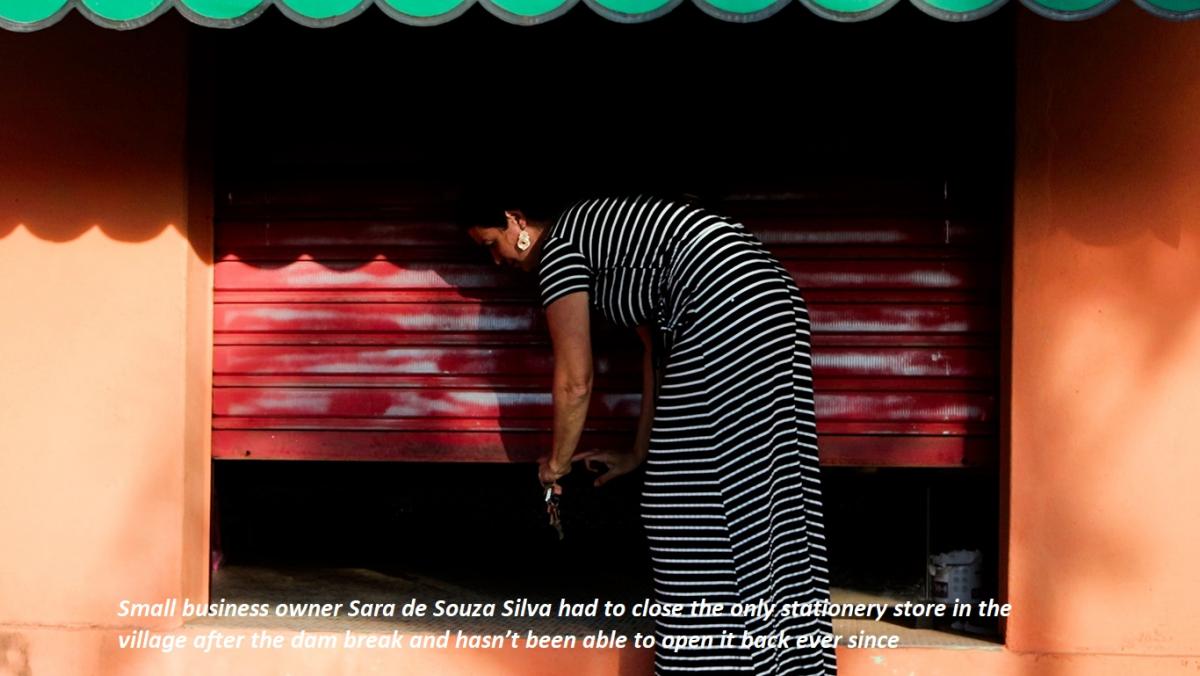
“It’s really sad for our community. It’s health issues, mental health issues, in the elderly, children with wounds on their bodies, because of the mud and the air. And Vale has done nothing for us,” Sara says, adding her small business lost thousands of reais in sales on back-to-school season.
In Parque da Cachoeira, a neighborhood that used to be known for its thriving vegetable production, six farms were swallowed up by the toxic mud, putting approximately 10 families who worked in each farm out of business, leaving them in debt to financial institutions and suppliers. “We don’t have any source of income to pay them anymore. Even starting over is hard. Everything has been destroyed. Our land is completely covered [in mud]. And we can’t use what is left of productive land because we depend on water,” farmer Adriana Leal says.
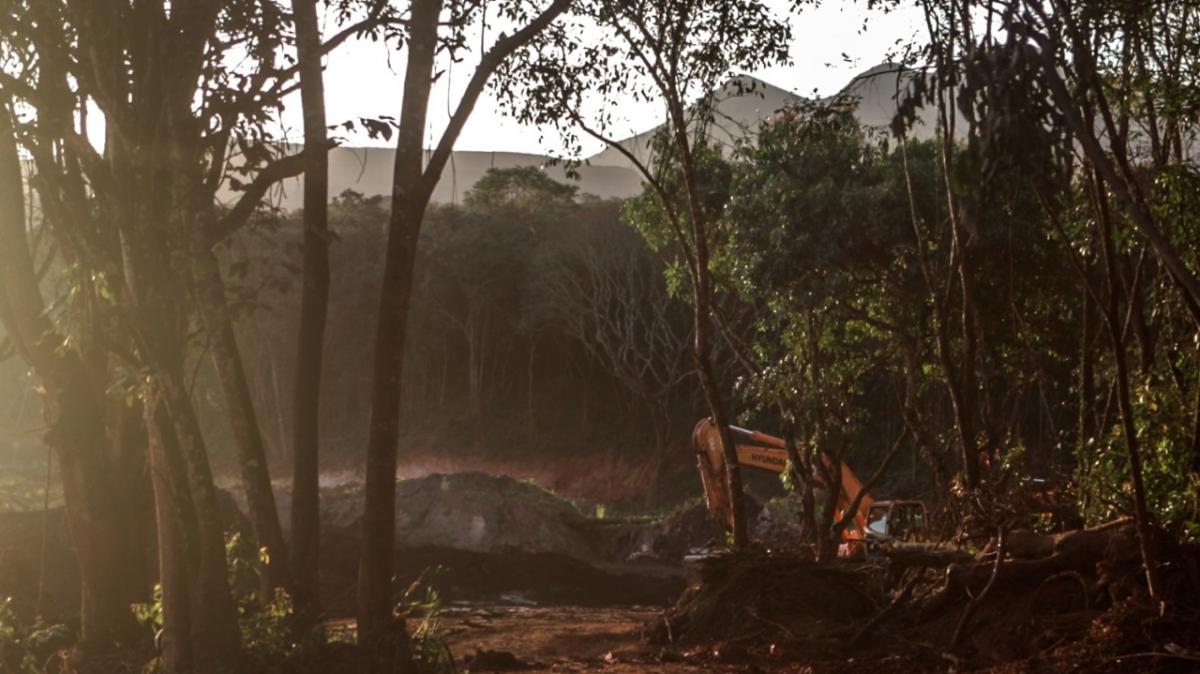
The Public Defender’s Office of the state of Minas Gerais has been providing individual assistance to the families impacted since January 28th and witnessing the enormous damage caused by the dam break. People who survived the collapse are suffering not only with mental and physical health issues, but also for losing their house and belongings. Local food production was compromised and the communities cannot wash their food or even cook with the water that comes out of the tap.
“We are facing a lot of problems with Vale. There are reports of very polite employees who don’t meet the deadlines. There is no answer, information is confusing. There are reports of violent episodes in the communities perpetrated by Vale employees. We have also found communities are having trouble accessing the rights they are entitled to, like receiving emergency funds. People go to Vale’s support centers and are told they are not entitled to things they actually are,” the public defender Carolina Morishita says.
Established by the banks of the Paraopeba River, the small town of Mário Campos has also built its economy on family farming, but now it may never again be a source of produce for the entire area.
“People are afraid to buy food from the town. Everyone thinks the produce is being irrigated with water from the river,” Andreza Rodrigues underscores. She is the only councilwoman -- of nine members of the city council -- to have a relative killed in the tragedy.
She feels emotional when she talks about her son, 26-year-old Bruno, one of the Vale workers who was hit by the mud while he was having lunch at the company cafeteria. In Mário Campos, 20 people were killed -- one more than the 19 dead after the burst of a dam in Mariana, in 2015.
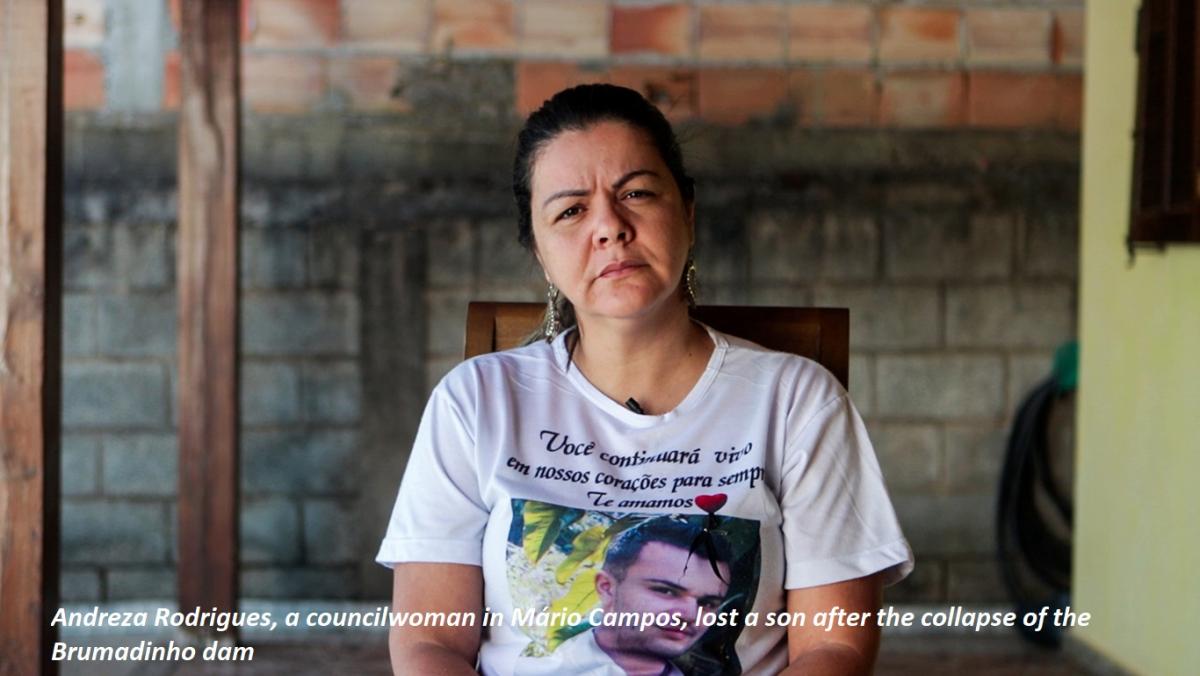
“I have never got a call from Vale. Our children were healthy, had plans for their lives when they got off to work. And no one reached out to me or the other families,” she says.
The councilwoman is part of a committee of families whose relatives were not found, a group created in March after a meeting called by the Labor Prosecution Service at the city council of Brumadinho. She points out that they are struggling so that the search teams don’t stop their work. “The pain only grows stronger and stronger. Each day is like an eternity. We are slowly dying everyday.”
The committee is mounting pressure on authorities so that more rescue responders and the Medical Examiner’s Office can have access to appropriate equipment to continue their work. A crucial demand is to have search-and-rescue dogs in the operations.
“There were no dogs for weeks, and more than 90 percent of successful searches are because of the dogs. A lot of them got sick because of the mud and were not able to come back. Our demand is to buy dogs from wherever necessary, but the lack of dogs cannot be a factor to stop us from or hold us back to prevent us from finding our gems,” the councilwoman argues.
There are approximately 124 fragments of bodies at the Medical Examiner’s Office being analyzed in order to identify the victims. The most recent successful identification was concluded on June 11th, linked to a victim identified in February. The DNA samples of at least 30 body parts have been analyzed, but not able to establish the identification of the victims.
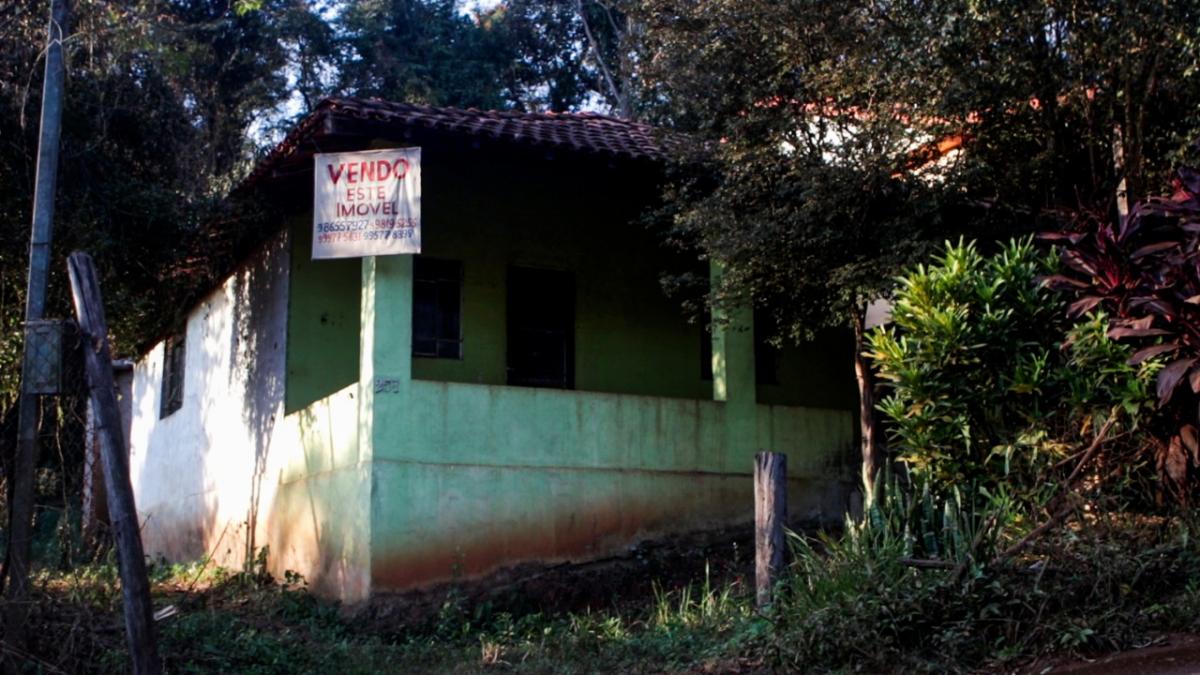
Survivors without proper remedy
Eloá Magalhães, an activist with the Movement of People Affected by Dams (MAB) in the Brumadinho area, points out that, in 2015, the works have united to pursue remedies in a timely manner after the dam collapse in Mariana.
“First, the MAB was able to push Vale’s outsourcing companies away from the process of identifying the victims,” she recalls, adding that the movement believes this kind of analysis has to be conducted by public institutions that are not connected to Vale to make sure survivors are guaranteed their rights.
Vale claims it has been “completely focused on compensating,” including paying damages, donations to public organizations and people who have been affected, medical and psychological care, medications, and other services. The company reports it has invested R$1.5 billion (roughly US$400,000) in environmental services, health equipment, transportation, and other logistics costs.
On April 30th, Vale announced the creation of a Special Repair and Development Department with over 400 employees to coordinate the social, economic, and environmental reconstruction in the cities that have been impacted by the dam disaster.
According to the Public Defender’s Office, 98,146 people are receiving a minimum wage every month from Vale, as part of a preliminary agreement signed between the office and the miner on February 20th. But this represents less than 10 percent of the total number of people impacted in nearby communities, a MAB survey showed.
Agreement at risk
Since the dam collapsed, R$2.3 billion (US$610 million) have been allocated to environmental services, health supplies, transportation, and logistics. About 256 families are living in temporary housing, hotels, lodges, or with friends and family.
On July 15th, Vale agreed to signing a deal with the Labor Prosecution Service to pay pain and suffering damages to the families of 242 victims who lost their lives. Parents, children, and spouses of dead workers will receive R$700,000 (US$185,000) each. Siblings will be entitled to R$150,000 (US$40,000). The company will also have to pay R$400 million (US$105 million) as collective pain and suffering damages.
It is the largest amount ever paid in damages to individuals in Brazil’s labor justice system history, according to prosecutor Geraldo Emediato de Souza.
After signing the deal, Vale was able to unfreeze R$1.6 billion (US$420 million) from its accounts. The deal, however, may not come into effect, as it clashes with the labor reform that passed during the Michel Temer administration, which limits the payment of damages to 50 minimum wages. The Supreme Court is expected to rule on the matter in October.
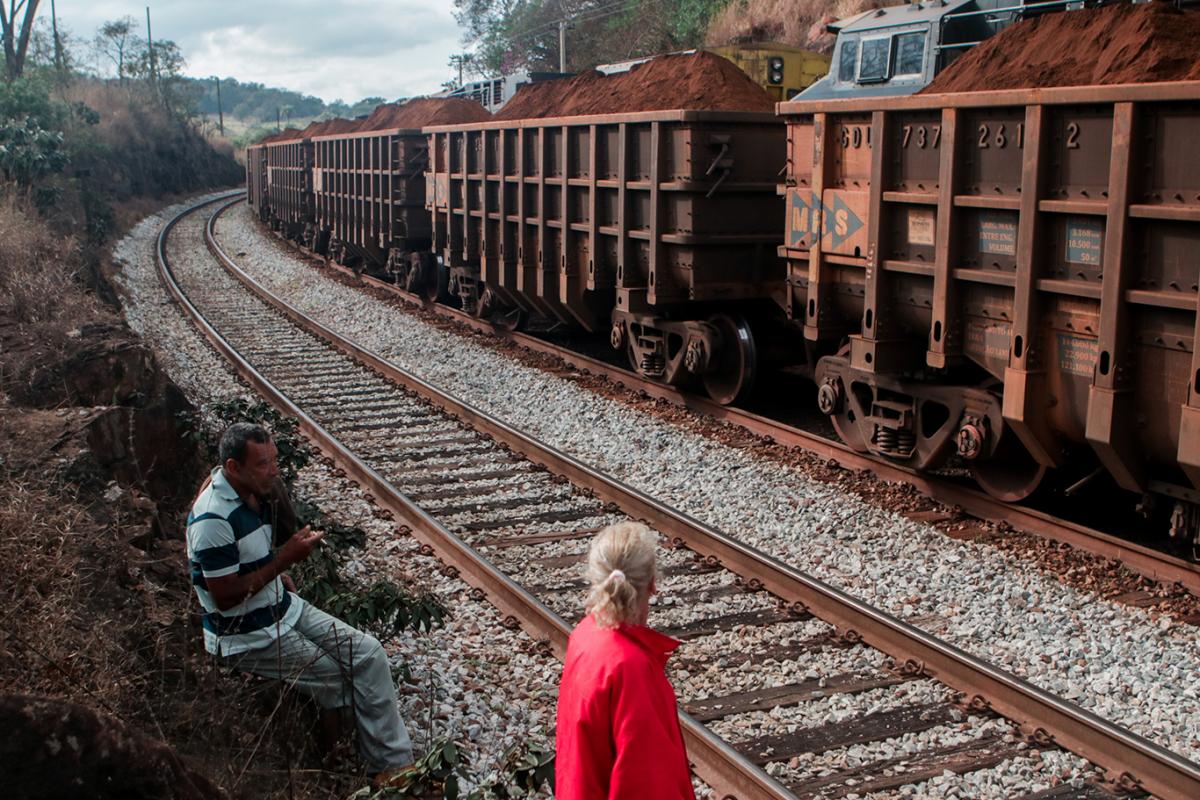
Vale doesn’t stop
Meanwhile, in the business world, Vale continues to operate in Brumadinho. Besides the Mina do Feijão mine, which was shut down after the dam break, the company also operates four reserves in the area, where there are 308.5 million tons of high-purity iron ore.
In the first quarter of 2019, Vale extracted 72.87 million tons of iron ore. In May, iron ore prices hit US$100 per ton, a five-year high.
The company is the global leader in iron ore and nickel production. In ten years between 2008 and 2017, it recorded approximately US$57 billion in profits.
Almost all minerals extracted in Brazil are for exports. In 2018, Vale recorded US$6.86 billion in annual net income and produced 384.6 million tons.
While the company puts in efforts to expand its operations to other areas in the country, 80 percent of its 133 iron ore dams are located in Minas Gerais. Currently there are four Vale dams at high risk of imminent collapse.
Safety compromised
Legislation requiring that the Brazilian National Water Agency (ANA) present annual dam security reports have been in effect for less than a decade.
There are an estimated 24,000 dams in Brazil, including tailings dams, water power dams, and water supply dams, but only 4,500 of them are subject to oversight by authorities under Brazil’s national policy for dam security, and only 3 percent of them have been inspected.
When the dam burst in Brumadinho, the ANA had eight officers to oversee more than 400 dams in the 3.2-million-square-mile country. In the past six months, the government transferred 33 workers from other cabinets to help the sector, but it is still not enough. Meanwhile, the government has frozen 29 percent of the agency’s non-mandatory spending budget, NGO Contas Abertas, a public spending watchdog, reported.
Vale extracts iron ore in three states in Brazil: Minas Gerais -- which represents 53 percent of the miner’s production --, Pará, and Mato Grosso do Sul.
The tailings dams that collapsed this year in Brumadinho and in 2015 in Mariana were both built using an upstream design, which is considered the cheapest, least safe kind of structure. It allows the embankment to expand up when the dam is full, using the mud itself from the mining byproducts as part of the barrier.
Rogério Correia, a federal congressman, proposed that all upstream dams operating in Brazil should be decommissioned, adding that society has to take to the streets to demand the implementation of safer designs. “Unfortunately, we already know that this dam design is not viable, because it is only ‘safe’ until it collapses, causing irreparable damage to human life and the environment. Only by people mobilizing it will be possible to break the blockade that protects miners, which have a very powerful lobby.”
While Vale announced it would decommission all 19 upstream dams in Minas Gerais after the dam break in Brumadinho, 10 of them are still full, though inactive -- the same case as the dam that broke six months ago. Vale reported that the other nine have been decommissioned.
Minas Gerais is the state with the largest number of dams at high risk: 132 out of 200 reported by Brazil’s National Mining Agency. Vale and its subsidiaries run 59 of these dams, including the ones in Brumadinho.
In a statement, Vale wrote to Brasil de Fato saying it presented a plan to Brazilian authorities to speed up the process “to reintegrate its upstream dams to the environment,” adapting the structures “without posing any risk to people or the environment.”
Since the Brumadinho dam disaster, lawmakers have introduced 78 bills to the Brazilian Congress to inspect and punish mining companies if they break the country’s mining code, but they are all still pending.
CREDITS:
Article, video, photos: Pedro Stropasolas | Editor: Rodrigo Chagas | Designers: Fernando Bertolo and Fernando Badharó | Video editing: Marcelo Cruz | Radio version (Portuguese): Katarine Flor | Coordinators: Daniel Giovanaz, Vivian Fernandes, and José Bruno Lima | Radio coordinator: Camila Salmazio | English version: Aline Scátola
